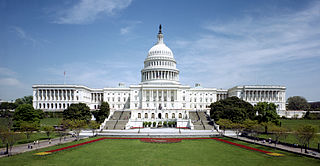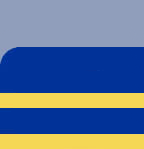#58: Congress passes new ESSE to replace NCLB
In this issue:
-
Congress reauthorizes education acts, sends to President
Control of public education has in large part been returned to the individual states.
-
CSF Member School Participation in Florida’s Scholarship Programs
Dec 9th, 2015
How does Congress's new ESSE apply to Christian schools? What will change for Florida's public schools?

Congress reauthorizes education acts, sends to President
Control of public education has in large part been returned to the individual states.
At last! Today, December 9th, 2016, Congress passed a bipartisan bill supported by a large majority of the two parties in both houses! They sent to the President for his signature the reauthorized Elementary and Secondary Education Act. Formerly referred to as the No Child Left Behind Act (NCLB), it is now labelled the Every Student Succeeds Act (ESSA).
"So what?" some in Christian schools might ask. "It doesn't apply to us!" Not so fast! It is important to all of us for the following reasons.
First, the very process worked as laid out in the Constitution. No matter the problem in government or in the public square, our nation is solidly embedded with both feet in the Constitution. Over time it ultimately prevails. We are a Constitutional Republic.
Second, a very basic principle in the Constitution--the Tenth Amendment--was reaffirmed by Congress.
Third, the control of public education has in large part been returned to the individual states and away from a philosophy that believes big, centralized government knows best. The U.S. Secretary of Education's authority has been significantly restricted in this bill, preventing his/her intruding into the states' decision-making on testing, standards, resuscitating failing schools, etc.
Fourth, what is practiced in public schools has great bearing on what is expected of non-public schools--if not by law, by community expectations and prevailing "best practices."
h2. What is new or different in the ESSA?
h3. Standards
* The bill takes away the U.S. Secretary of Education's ability to require the Common Core as a condition of federal grants.
* The decision about whether or not to adopt the Common Core will be left up to the individual states.
* It prohibits the Secretary of Education from adding any new requirements on states and schools not specifically required in law.
* States must adopt "challenging" academic standards. They can choose Common Core or write their own. Moreover, the U.S. Secretary of Education is expressly prohibited from forcing or even encouraging states to pick a particular set of standards (including Common Core).
* The states are required to intervene in the lowest 5% of failing schools or where less than 2/3 (67%) of students graduate.
* Will not allow Title I funds (federal funding for low-income children) to be made portable by states (i.e. funds do not follow the child to another public school, charter school, or private school).
(Note: The mandates given to the states in the ESSA come via Congressional law and not by a federal department's arbitrary program.)
h3. Tests
* Eliminated is the controversial mandate under the NCLB requiring that individual states show progress annually in math and reading scores or face possible federal intervention. Congress recognized this as an unconstitutional power grab by the Department of Education.
* Gone is the Yearly Progress mandate that dictated to the states standardized testing benchmarks.
* States still have to test students in reading and math in grades 3 through 8 and once in high school as formerly with NCLB, and must extract the test data for individual schools and specific categories of students within schools (ELL, poverty, special ed, racial minorities).
* States get wide latitude in setting achievement standards and goals, what to hold schools and districts accountable for, and in determining how to deal with low-performing schools.
* While tests still are to hold a major role, in state accountability processes, states are to incorporate into the processes other factors involved with student learning (like overall school climate, teacher-student interaction, or availability of advanced coursework).
* Schools are to test 95 percent of their students, including 95 percent of subgroups of students (e.g. ELL, poverty, special ed, racial minorities). The penalty under NCLB for not reaching this threshold (an automatic failing grade) has been removed.
h3. New STEM program
(Science, Technology, Engineering, and Mathematics) Master Teacher program.
h3. Family Engagement in Education Program
This is intended to "assist the Secretary, state educational agencies, and local educational agencies in the coordination and integration of Federal, State, and local services and programs to engage families in education."
h3. New Preschool program
A new federal preschool program authorized by the Every Student Succeeds Act, will provide annual federal funding at $250 million. The program will be housed at the Department of Health and Human Services (HHS), and jointly administered by the Department of Education (similar to the confused co-involvement of DCF and the FLDOE in VPK and Gold Seal).
While $250,000,000 will not go very far nationally when divided among the states, it is a significant step towards heavy federal involvement in preschool education, and also would solidly align the standards for PK with standards of Head Start and Common Core.
The practical impact on CSF Preschool programs will over time mean many more publicly funded preschool seats, increasing bureaucracy, and an increasing tendency towards national standards. This may cause decline in enrollment from families who enroll in Christian schools in the absence of preschool programs in public schools, and who enroll in public schools for K or grade 1.
h3. New Civics program for teachers and high school students
The ESSA will establish two Presidential Academies for the Teaching of American History and Civics, to improve the teaching of history and civics for up to 50 to 300 teachers annually, selected from public and private elementary and secondary schools throughout the country. It will also establish Congressional Academies, for high school juniors and seniors at the recommendation of their principal. All participants in both programs receive a stipend for travel expenses.
CSF Member School Participation in Florida’s Scholarship Programs
h2. Florida Tax Credit Scholarship Program
*Statewide Stats 2015-2016:*
* 77,079 scholarship students
* 1,540 participating schools of which 75% are faith-based
* 66% of students are in grades K-5
* $5,677 the amount granted if targeted for private school tuition
* $25,557 = average recipient income for family of four
CSF Member Schools 2015-2016:
* 23 CSF member schools have enrolled 1,592 Tax Scholarship students for the 2015-2016
* Total tax credit dollars invested in 1,592 CSF students is $9,037,784.00.
1,592 X $5,677 = $9,037,784
Largest Tax Scholarship Enrollment CSF schools:
* ICBK Educational Center in Kissimmee = 233 students
* Lighthouse Private Christian Academy in Gulf Breeze/Pensacola =160 enrolled.
* All but three CSF schools participate in the program.
The dollars granted to families are not being siphoned away from public schools, contrary to what the teachers' unions and superintendents claim.
* 2015 per public sch pupil spending in Florida is $7,176 x 1,592 students = $11,424,192.
* 2015 per pupil tax scholarship grant @ $5,677 x 1,592 CSF students = $9,037,784
* Total savings to Florida: $2,386,398 or $1,499 per CSF Tax Scholarship student.
(Per pupil spending stats found at "Governor Scott's webpage":http://www.flgov.com/2014/08/21/gov-rick-scott-per-student-spending-will-be-highest-in-florida-history-next-year/)
h2. Personal Learning Scholarship Accounts (PLSA)
The student may not participate if enrolled in more than one of the following: public school, McKay scholarship,Tax scholarship, VPK.
Students ages 3 to 22 with the following diagnoses are eligible to receive PLSA funds: Autism spectrum disorder, Muscular dystrophy, Cerebral palsy, Down syndrome, Prader-Willi syndrome, Spina bifida, Williams syndrome, Intellectual disability (severe cognitive impairment), or Kindergarteners who are deemed high-risk due to developmental delays.
Source: "fldoe.org":http://www.fldoe.org/schools/school-choice/k-12-scholarship-programs/plsa/
h2. McKay Scholarships for Students with Disabilities Program
Provides scholarships to children with learning and physical disabilities. The scholarship provides the option to attend a public school other than the one assigned or to provide tuition assistance for attendance at a participating private school.
*Stats 2013-2014:*
* $183.9 million was granted to 28,370 students to scholarship program participants.
* Maximum scholarship amount ranged from $4,539 to $19,990
* Average amount of $7,278 per student
* Average amount for students with a 504 Plan was $4,146.
* 28,370 students from 1,248 private schools participated.
* 59% were enrolled in faith-based schools.
Source: "fldoe.org":http://www.fldoe.org/core/fileparse.php/5606/urlt/Fast_Facts_McKay.pdf
Largest number of McKay enrollments in CSF schools:
# IBCK Kissimmee: 96
# Bradenton Christian: 84
Twenty CSF member schools have enrolled 654 students for 2015-2016 in the McKay program.
h2. Voluntary Pre-Kindergarten Program
VPK is available to every four-year-old child in Florida without reference to family income. CSF schools have enrolled 542 VPK students.
Largest number of VPK students in CSF schools:
# Sunlight Christian, Port St. Lucie: 138
# All Villages Christian, West St. Lucie; Seven Rivers Christian, Lecanto: 55
In the CSF newsletter ??Student Assessment?? sent to you last week were two faulty links for the downloadable files SESIP-5 and SESIP-6. Here are the correct links.
Form SESIP-5 for downloading at "http://csfla.org/members-only/downloads":http://www.csfla.org/downloads.
Form SESIP-6 is also available for download at "http://csfla.org/members-only/downloads":http://www.csfla.org/downloads. It explains briefly the rationale for the Student Achievement Data Sheet. It also gives actual examples of stronger Strand 5 narratives received from schools.



